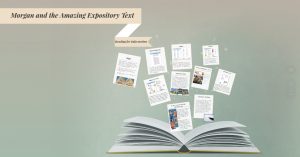At the beginning of this course in my “flight plan,” I outlined my hopes for this course as it fits in with district initiatives and my personal career goals. I hope to transition into administration within the next couple of years, and district-level decisions with regards to technology are being made all the time with the help of current administrators. Specifically, I looked at the Google Classroom leadership training I was already involved with and hoped that this course would help clear my own pedagogical thinking with regards to initiatives like this. It has.
In my “flight path,” I liked the quote, “Teachers or educational administrators making decisions about educational technology should have some theoretical model or framework that guides the choice of media and technology. If not, they will be constantly driven by the latest technology development, whether or not they are appropriate” (Bates & Poole, 2003). This course supplied a few valuable tools for evaluation of technology to be used in teaching and learning.
Early in the course, we looked at two frameworks for evaluation, including Bates’ SECTIONS model (Bates, 2014). It was useful to discuss this model with my group during Assignment 2 as we designed the LMS evaluation rubric. I revisited this framework twice more in the course as I evaluated Prezi.com for my digital story, and Google Classroom for my Content Module reflection, but the principles examined in Chickering & Ehrmann were thought-provoking as well. “Good Practice Uses Active Learning Techniques” and “Good Practice Respects Diverse Talents and Ways of Learning” (Chickering & Ehrmann, 1996) are two guidelines for good practice across all aspects of teaching but are especially good to keep in mind as technology becomes more and more prevalent in the classroom.
As we moved into Module 2, it was interesting to make connections between Lenora and her website quandaries, and the “on the ground” situation in Eliza Archie Memorial School. As a hopeful administrator, I thought about what I would tell someone working for me in this situation. Would I put pressure on someone to adopt a technological solution that was perhaps out of their comfort zone? Possibly, but I would like to think that during my discussion of Lenora’s situation, I also presented a good argument for balancing home- and work-life. Teachers have a tough time with this one, and technology is supposed to be the servant, not the master.
For a few years, I have been a little nervous watching the US educational emphasis on standardized testing. Fortunately, it would seem that the Calgary Catholic School District and the Canadian education system in general are leaning away from this emphasis. In Week 7, I really enjoyed reading about assessment and learning. I wrote about how that in their introduction, Gibbs and Simpson point out that “The most reliable, rigorous and cheat-proof assessment systems are often accompanied by dull and lifeless learning that has short lasting outcomes – indeed they often directly lead to such learning” (Gibbs & Simpson, 2005). They go on to point out that “A review of 150 studies of the relationship between exam results and a wide range of adult achievement found the relationship to be, at best, slight” (Baird, 1985 as quoted in Gibbs & Simpson, 2005). Students who spend the majority of their learning time preparing for exams come away with little to show in terms of deep learning. Technology seems to lend itself so well to project-based learning, where students can be assessed for their deep learning of a topic or skill set. I really enjoyed see how other teachers are incorporating project-based learning and assessment. Mike Hengeveld’s STEM Solar Tracker project was inspirational.
In Week 9, I learned a little more about myself in terms of where I stand on mobile devices in the classroom. Up until this point, I would have been automatically in favour of students brining their own devices to school. When I had a chance to think about it, however, I realized that for one student in my room who does bring her phone to school on a regular basis, it has not been a positive for her. She has been isolated at recess because she would rather play on her phone then play with her friends, and for a Grade 4 student, that socialization time is vital. Am I still in favour of BYOD (bring-your-own-device) in general? Yes, but perhaps only for more structured learning activities inside the classroom, and perhaps for older students.
As I developed my own online course for students learning about expository writing, I had an opportunity to re-examine something I’ve taught for several years. Google Classroom has much to offer during a blended course. I can see this being a fantastic way for myself as a teacher to provide more timely feedback, for students to access materials and to collaborate online with their peers.
At the beginning of the course, I was wondering specifically about Google Classroom, the leadership training I was involved with at the district level, and how this course would help with my pedagogical thinking as I worked more with this tool and was expected to recommend it for use by other teachers. I am more confident with the choices I am making using technology in my teaching in general, but more specifically with Google Classroom because of the material discussed in this class and the hands-on practice I’ve done. I look forward to using this pedagogy as I implement technology in the future, perhaps in a leadership role.
References:
Bates, T. (2014). Choosing and using media in education: The SECTIONS model. In Teaching in digital age. Retrieved from https://opentextbc.ca/teachinginadigitalage/part/9-pedagogical-differences-between-media/
Bates, A. W., & Poole, G. (2003). Effective Teaching with Technology in Higher Education: Foundations for Success. Jossey-Bass, An Imprint of Wiley. 10475 Crosspoint Blvd, Indianapolis, IN 46256.
Chickering, A. W., & Ehrmann, S., C. (1996). Implementing the seven principles: Technology as lever. American Association for Higher Education Bulletin, 49(2), 3-6. Retrieved from http://www.aahea.org/articles/sevenprinciples.htm
Gibbs, G., & Simpson, C. (2005). Conditions under which assessment supports students’ learning. Learning and Teaching in Higher Education, 1(1), 3-31. Retrieved from http://www.open.ac.uk/fast/pdfs/Gibbs%20and%20Simpson%202004-05.pdf

